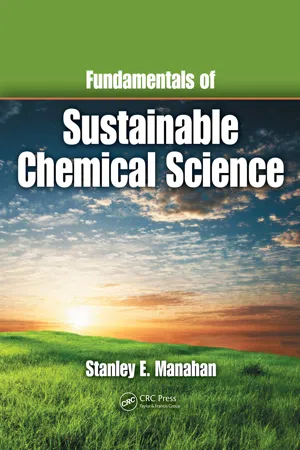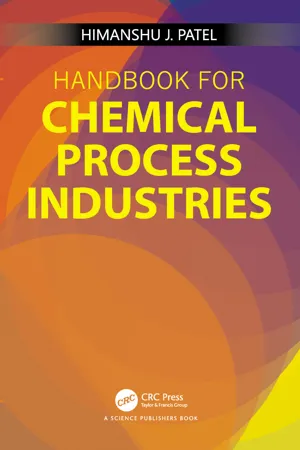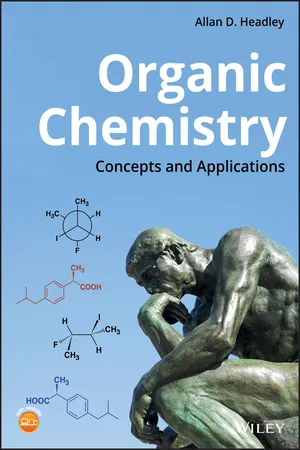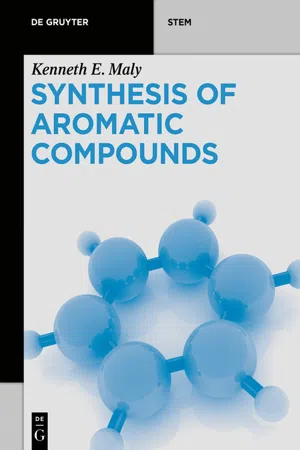Chemistry
Benzanthracene
Benzanthracene is a polycyclic aromatic hydrocarbon consisting of three fused benzene rings. It is a yellowish, crystalline compound that is used in research as a model for studying the carcinogenicity of polycyclic aromatic hydrocarbons. Benzanthracene is also a potential environmental pollutant due to its presence in fossil fuels and its release during incomplete combustion processes.
Written by Perlego with AI-assistance
Related key terms
1 of 5
7 Key excerpts on "Benzanthracene"
- eBook - PDF
- Stanley E. Manahan(Author)
- 2009(Publication Date)
- CRC Press(Publisher)
As shown in Figure 9.8, some arenes, such as naphthalene and the polycyclic aromatic compound benzo[ and the polycyclic aromatic compound benzo[ a ]pyrene, contain fused rings. ]pyrene, contain fused rings. OH OH Cl 1 2 3 4 5 6 Naphthalene Phenol No H atoms 1 H atom Ortho Para Meta Benzo(a)pyrene 3-Chlorophenol or meta -chlorophenol Figure 9.8. Figure 9.8. Aromatic compounds containing fused rings (top) and showing the numbering of Aromatic compounds containing fused rings (top) and showing the numbering of carbon atoms for purposes of nomenclature. carbon atoms for purposes of nomenclature. 318 Fundamentals of Sustainable Chemical Science 318 Fundamentals of Sustainable Chemical Science Benzene and Naphthalene Benzene and Naphthalene Benzene is a volatile, colorless, highly flammable liquid used to manufacture Benzene is a volatile, colorless, highly flammable liquid used to manufacture phenolic and polyester resins, polystyrene plastics, alkylbenzene surfactants, chloro-phenolic and polyester resins, polystyrene plastics, alkylbenzene surfactants, chloro-benzenes, insecticides, and dyes. It is hazardous both for its ignitability and for benzenes, insecticides, and dyes. It is hazardous both for its ignitability and for its toxicity (exposure to benzene causes blood abnormalities that may develop into its toxicity (exposure to benzene causes blood abnormalities that may develop into leukemia). Naphthalene is the simplest member of a large number of polycyclic aro-leukemia). Naphthalene is the simplest member of a large number of polycyclic aro-matic hydrocarbons having two or more fused rings. It is a volatile white crystalline matic hydrocarbons having two or more fused rings. It is a volatile white crystalline solid with a characteristic odor and has been used to make mothballs. The most solid with a characteristic odor and has been used to make mothballs. - eBook - ePub
Conjugated Objects
Developments, Synthesis, and Applications
- Atsushi Nagai, Koji Takagi, Atsushi Nagai, Koji Takagi(Authors)
- 2017(Publication Date)
- Jenny Stanford Publishing(Publisher)
2.1). The fusion of three benzene rings gives two isomers, depending on their connectivity. One is anthracene, which consists of three ortho -fused benzene rings in a linear arrangement. Another is phenanthrene, in which naphthalene is fused with a benzene ring at the C1-C2 bond to form a bent structure. Further annelation of benzene ring(s) to anthracene in a linear manner gives the so-called [ n jacenes such as tetracene and pentacene. A zigzag annelation of benzene ring(s) to phenanthrene affords [ n jphenacenes such as chrysene and picene. These [ n jacenes and [ n jphenacenes possess planar structures and demonstrate promising properties as organic semiconductors for OFETs. On the other hand, an angular annelation of benzene ring(s) to phenanthrene gives [ n jhelicenes with nonplanar helical structures. [ n jHelicenes composed of six or more benzene rings exhibit stable helical chirality because of an intramolecular steric repulsion, which endows them with unique chiroptical properties. Heteroaromatic rings are also important modules for fused π-conjugated compounds since the introduction of heteroatom(s) into a π-conjugated framework is an effective way to control the electronic structure of them. In particular, thiophene-fused compounds have been well-studied in terms of synthesis and application as organic functional materials. For example, a series of thiophene-fused pentacyclic aromatic compounds were synthesized and found to demonstrate high semiconducting properties. Representative examples are shown in Fig. 2.2. In these compounds, benzene and/or thiophene rings are annelated in a linear fashion. Accordingly, these compounds are called as thienoacenes. Anthra[2,3- h :6,7- h ’]dithiophene (1) is apparently isoelectronic with pentacene, the corresponding pentacyclic hydrocarbon acene. However, compounds 2 and 3 should be considered not as [ n ]acenes but as [ n ]phenacenes in the sense of electronic structure - Isadore Berlman(Author)
- 2012(Publication Date)
- Academic Press(Publisher)
In analogues of the above compounds such as benzo[0/w]fluoranthene (#193C) and benzo(0iW)perylene (#198B) the steric hindrance is somewhat relieved by bridging and well-defined spectra and larger values of e max are observed. Chrysene (#181C) is another member of the bent hydrocarbons. Its fluorescence characteristics resemble those of a substituted phenanthrene or beta-substituted naphthalene. The alternate names 1,2-benzophenanthrene or 1,2 ;5,6-dibenzonaphthalene are appropriate spectroscopic names. Triphenylene (#182C) can be considered as being composed structurally of three benzene rings joined by cross links. The fluorescence characteristics, however, indicate that this compound in its excited state resembles a substituted phenanthrene or beta-substituted naphthalene molecule. Alternate names such as 9,10-benzophenanthrene or l,2;3,4-dibenzo-naphthalene are descriptive. Similar type compounds such as 1, 2;3,4;5, 6;7, 8-tetraBenzanthracene and 1, 2;6, 7-dibenzopyrene can also be considered isolated benzene rings joined by cross links in the same manner as tri-phenylene above. The former behaves like two bridged phenanthrene molecules and the latter like a substituted pyrene molecule. It is suggested by Clar and Zander 194 that the relative chemical inertness of the above three compounds may be related to their peculiar structural and spectroscopic characteristics. 4.4 POLYCYCLIC HYDROCARBONS 81 b. PERICONDENSED AROMATICS The pericondensed aromatics, exemplified by pyrene, perylene, and coronene, contain carbon atoms that are shared by three rings. Each contains inner carbon atoms which do not lie on the periphery of the molecule. Furthermore, these compounds do not have 4n + 2 7r-electrons and therefore do not satisfy HuckePs rule of aromaticity. As spectulated earlier, the electrons in the unfilled shell may facilitate the formation of a charge-transfer state leading to excimer formation.- eBook - ePub
- Himanshu J Patel(Author)
- 2023(Publication Date)
- CRC Press(Publisher)
Chapter 6 Aromatic Chemicals6.1 Introduction
Aromatic compounds are chemical compounds that contain conjugated planar ring systems amid delocalized π-electron clouds in situ with individual alternating double and single bonds. The unique stability of these compounds is known as aromaticity. They are additionally referred to as aromatics or arenes. Aromatic compounds are commonly divided into two categories: benzenoids (one containing a benzene ring) and non-benzenoids (those that no longer contain a benzene ring) for example, Furan. Aromatic compounds follow the Huckel rule, which refers to the fact that aromatic compounds have (1) whole delocalization of the 7E electrons in the ring, (2) Presence of (4n + 2) π electrons in the ring where n is an integer (n = 0, 1, 2,...) and in the end (3) a planar structure. Aromatic compounds are immiscible with water and often unreactive (stable). Aromatic compounds are characterized by a sooty yellow flame due to their high ratio of carbon to hydrogen. The basic aromatic compounds are benzene, toluene and xylenes, which are obtained from petroleum. Aromatic compounds are mostly liquid or solid, so, their manufacturing processes are performed in the liquid phase reactor with stirring and heating facilities. They have higher melting and boiling points compared to C1—C5 chemicals. They cover a wide range of chemicals. Actually, industries cannot exist without these aromatic compounds, as they utilize these chemicals (Hepworth et al., 2013 ).6.2 BTX Separation
Benzene, toluene and xylenes (BTX) are prepared by various methods, but, the BTX manufacturing process dependson the recapture of aromatics derived from various processes, such as catalytic reforming, coal carbonization, steam cracking of hydrocarbons, dearomatisation of naphtha, Hydro dealkylation and disproportionation. Out of these processes, catalytic reforming of naphtha is considered as one of the best renovation processes in the crude oil industry. This is because, the requisite octane number and the appropriate market price is justified with this process using platinum (Pt), platinum-iridium (Pt-Ir) or platinum-iridium-tin (Pt-Ir-Sn) alloy as a catalyst. - eBook - ePub
Organic Chemistry
Concepts and Applications
- Allan D. Headley(Author)
- 2019(Publication Date)
- Wiley(Publisher)
Benzene is another one of these organic compounds with a very distinctive aroma and is responsible for the odor of coal distillate. It was discovered that these organic compounds all have a special feature, which is described as aromaticity, and as result, these compounds are referred to as aromatic compounds. As you can imagine, there are numerous compounds that can be described as aromatic compounds. There are other aromatic compounds that may not have a distinct characteristic odor. Some include aspirin, morphine, norepinephrine, epinephrine, nicotine, vitamin E, and estrone. It is difficult to study all aromatic compounds individually, so we will carry out our study of aromatic compounds on the most common aromatic compound, benzene, and apply the knowledge gained to other compounds that are similar and aromatic.Benzene was isolated from compressed illuminating gas in 1825 by Michael Faraday of the Royal Institution. In 1834, Eilhardt Mitscherlich of the University of Berlin synthesized benzene by heating benzoic acid with calcium oxide and he also showed that the molecular formula of benzene is C6 H6 . Today, benzene is obtained primarily from the distillation of petroleum, and it is used in the synthesis of many useful chemicals in our society. Benzene is also a very common solvent that is used in most chemical labs, both industrial and academic. However, it was removed from teaching labs, since it was shown to cause cancer when given to laboratory animals in very large dosage. Benzene is absorbed in the blood stream from inhalation and is converted to phenols and excreted by the liver. Benzene causes skin irritation; it is thought to cause leukemia. If absorbed in the blood, it will increase the number of white blood cells and it also causes damage to bone marrow. However, it is still sometimes used, under very controlled conditions, in industrial and research labs.Since most of the chemical properties of compounds in this very large category of aromatic compounds are similar, we will study in detail the chemistry of only one of these compounds, benzene. By knowing the chemical and physical properties of benzene, we will be able to predict the properties of other aromatic compounds. In this chapter, we will first define aromaticity in a chemical sense and then apply that definition to other molecules to determine if they are aromatic or not. In the later sections of the chapter, we will examine the reactions of aromatic compounds.17.2 Structure and Properties of Benzene
It was shown that the chemical formula of benzene is C6 H6 . Based on our knowledge of the number of hydrogens that are bonded to the carbons of saturated hydrocarbons, it is obvious that benzene is not a saturated hydrocarbon. In 1866, Friedrich Kekulé proposed that benzene had a cyclic structure with three alternating double bonds, as shown in Figure 17.1 - eBook - ePub
- Kenneth E. Maly, Kenneth Maly(Authors)
- 2022(Publication Date)
- De Gruyter(Publisher)
Figure 9.6 shows some of the Kekulé resonance structures of phenanthrene and anthracene and the corresponding Clar structures. If we consider phenanthrene, it can either be represented as having one aromatic sextet on the central ring, or two aromatic sextets on the terminal rings. Because the latter structure has the most sextets, it is considered the most important for describing the properties of phenanthrene. In anthracene, three Clar structures can be drawn; however, in the case of anthracene, the maximum number of Clar sextets is one. Because any one of the three rings can be drawn with an aromatic sextet, sometimes a single Clar structure is drawn with an arrow that indicates that the sextet can “migrate” between rings.Figure 9.6: Clar structures of phenanthrene and anthracene.If we consider the Clar structure with the maximum number of aromatic sextets, it implies differences in reactivity. For example, based on the Clar structure of phenanthrene, the 9,10-positions are more olefin-like in character. Indeed, when phenanthrene is reacted with bromine, it undergoes electrophilic addition at the central ring like an alkene rather than electrophilic aromatic substitution. Similarly, the central ring is more prone to oxidation. For anthracene, one aromatic sextet is shared among three rings, suggesting that the overall aromatic stabilization of a given ring is lower. If we consider the longer acenes, we see that even though the number of rings is extended as compared to anthracene, each structure still only has one aromatic sextet (Figure 9.7 ). This suggests that the longer acenes should have less benzenoid character and consequently be less stable and more reactive, which is consistent with the observed behavior of these compounds. Further, there are studies which suggest that longer acenes are can be represented as an open-shell diradical species, rather than a closed shell structure. Clar’s approach provides qualitative support for this because an open shell diradical can be represented as having two Clar sextets, as shown for heptacene in Figure 9.8 - No longer available |Learn more
- (Author)
- 2014(Publication Date)
- Academic Studio(Publisher)
________________________ WORLD TECHNOLOGIES ________________________ Chapter 5 Benzene Benzene IUPAC name Benzene Other names Benzol cyclohexa-1,3,5-triene Identifiers CAS number 71-43-2 PubChem 241 ChemSpider 236 UNII J64922108F KEGG C01407 ChEBI CHEBI:16716 ChEMBL CHEMBL277500 RTECS number CY1400000 Properties Molecular formula C 6 H 6 Molar mass 78.11 g mol −1 Appearance Colorless liquid Density 0.8765(20) g/cm 3 Melting point 5.5 °C, 279 K, 42 °F Boiling point 80.1 °C, 353 K, 176 °F Solubility in water 1.8 g/L (15 °C) ________________________ WORLD TECHNOLOGIES ________________________ Viscosity 0.652 cP at 20 °C Dipole moment 0 D Hazards MSDS External MSDS EU classification Flammable ( F ) Carc. Cat. 1 Muta. Cat. 2 Toxic ( T ) R-phrases R45, R46, R11, R36/38,R48/23/24/25, R65 S-phrases S53, S45 Flash point −11 °C Related compounds Related compounds toluene borazine Supplementary data page Structure and properties n , ε r , etc. Thermodynamic data Phase behaviour Solid, liquid, gas Spectral data UV, IR, NMR, MS Benzene is an organic chemical compound with the molecular formula C 6 H 6 . It is sometimes abbreviated Ph–H. Benzene is a colorless and highly flammable liquid with a sweet smell. Because it is a known carcinogen, its use as an additive in gasoline is now limited, but it is an important industrial solvent and precursor in the production of drugs, plastics, synthetic rubber, and dyes. Benzene is a natural constituent of crude oil, and may be synthesized from other compounds present in petroleum. Benzene is an aromatic hydrocarbon and the second [ n ]-annulene (-annulene), a cyclic hydrocarbon with a continuous pi bond. It is also related to the functional group arene which is a generalized structure of benzene. History Discovery The word benzene derives historically from gum benzoin, sometimes called ben-jamin (i.e., benzoin resin), an aromatic resin known to European pharmacists and perfumers since the 15th century as a product of southeast Asia.
Index pages curate the most relevant extracts from our library of academic textbooks. They’ve been created using an in-house natural language model (NLM), each adding context and meaning to key research topics.






